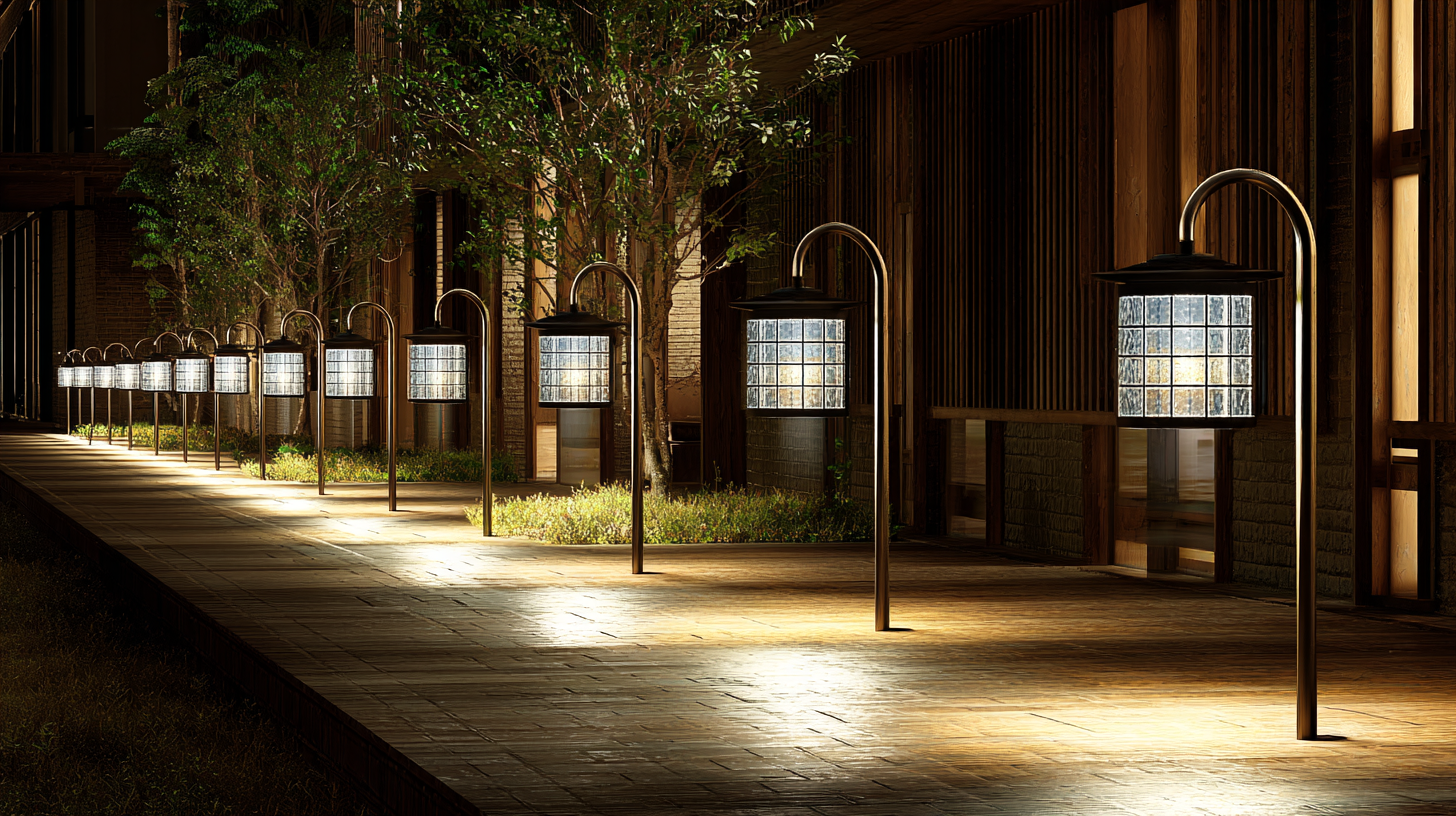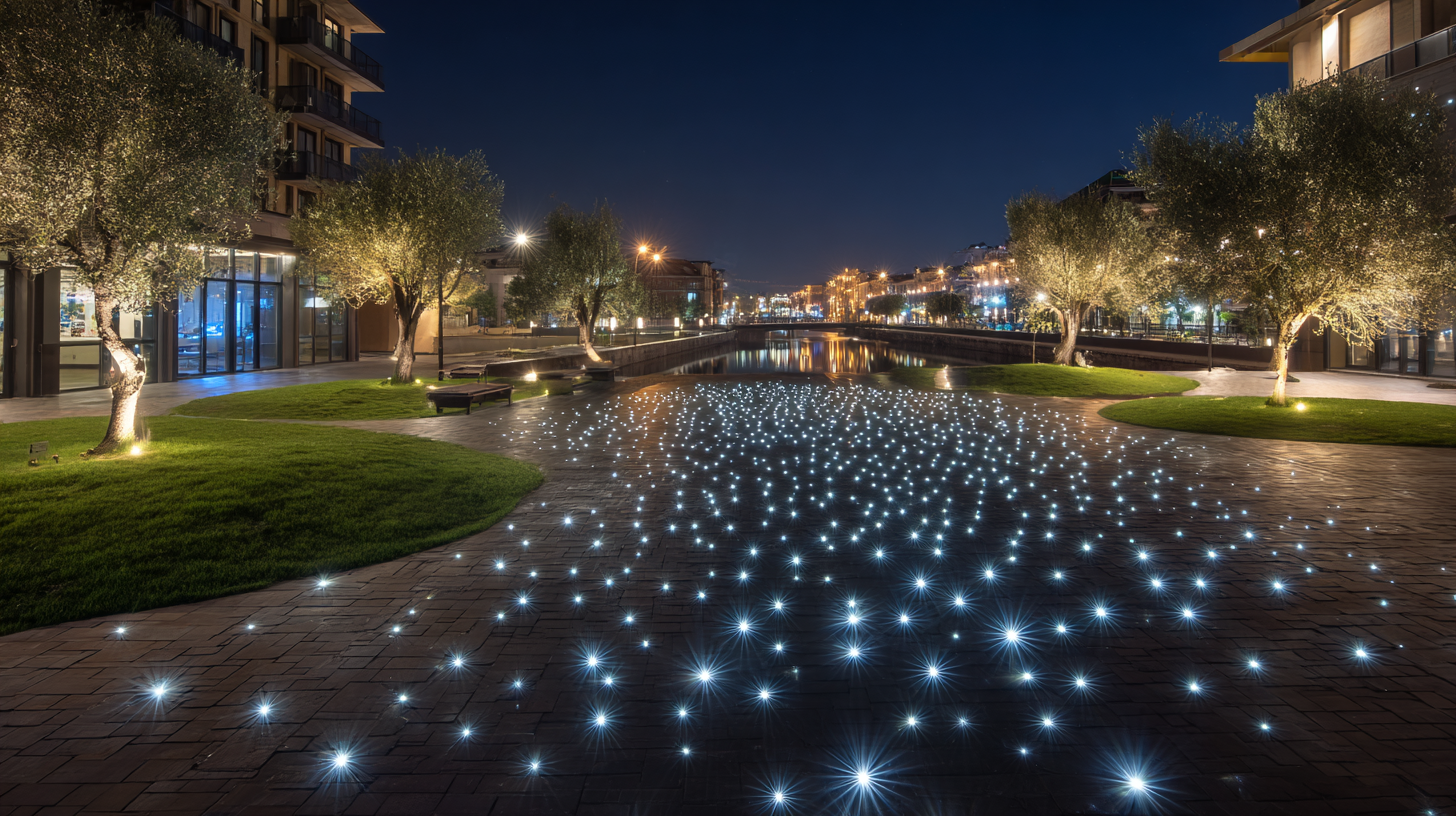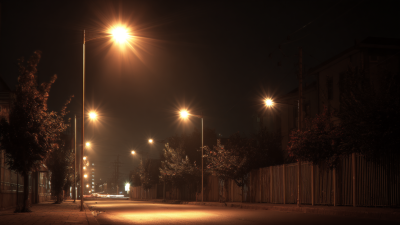Maximizing Energy Efficiency with Innovative LED Solar Lights in Sustainable Urban Development
 In the quest for sustainable urban development, maximizing energy efficiency has become a
paramount objective for cities worldwide. Among the innovative solutions emerging in this pursuit are
LED solar lights, which combine cutting-edge technology with eco-friendly practices. These lights
harness the power of solar energy, providing illumination that is not only cost-effective but also reduces the carbon footprint
associated with traditional lighting methods. By integrating LED solar lights into public spaces, urban planners can enhance safety, visibility, and aesthetics
while promoting a greener future. This approach not only aligns with sustainability goals but also empowers
communities to take proactive steps towards energy conservation. As cities continue to grow, the adoption of LED solar lights
represents a pivotal shift towards creating intelligent, energy-efficient environments that cater to the needs of both residents and the planet.
In the quest for sustainable urban development, maximizing energy efficiency has become a
paramount objective for cities worldwide. Among the innovative solutions emerging in this pursuit are
LED solar lights, which combine cutting-edge technology with eco-friendly practices. These lights
harness the power of solar energy, providing illumination that is not only cost-effective but also reduces the carbon footprint
associated with traditional lighting methods. By integrating LED solar lights into public spaces, urban planners can enhance safety, visibility, and aesthetics
while promoting a greener future. This approach not only aligns with sustainability goals but also empowers
communities to take proactive steps towards energy conservation. As cities continue to grow, the adoption of LED solar lights
represents a pivotal shift towards creating intelligent, energy-efficient environments that cater to the needs of both residents and the planet.
Identifying the Benefits of LED Solar Lights in Urban Environments
In urban environments, the integration of LED solar lights presents a formidable solution for enhancing energy efficiency. According to a report by the International Energy Agency (IEA), street lighting accounts for approximately 30% of a city’s total energy consumption. By employing LED solar lights, cities can reduce their energy usage by up to 75%, effectively lowering operational costs and energy demands. These lights harness the power of the sun during the day and utilize advanced LED technology to illuminate public spaces at night, minimizing reliance on the conventional power grid.

Furthermore, LED solar lights contribute to environmental sustainability by significantly reducing carbon footprints. The U.S. Department of Energy highlights that each LED light can prevent the emission of nearly 0.25 tons of CO2 every year. As cities globally move towards cleaner, greener strategies, the deployment of LED solar lights fosters improved urban landscapes while promoting safety and security. This innovative lighting system not only meets the aesthetic needs of urban planners but also addresses the urgent demand for renewable energy solutions, paving the way for a more sustainable future.
Integrating LED Solar Lighting into Urban Infrastructure Projects
As urban areas continue to expand, the integration of LED solar lighting into urban infrastructure projects has emerged as a pivotal strategy for enhancing energy efficiency and sustainability. According to a report by the International Renewable Energy Agency (IRENA), transitioning to LED lighting can reduce energy consumption by up to 75% compared to traditional lighting solutions. This transition not only lowers the operational costs for municipalities but also significantly diminishes carbon footprints, aligning with global sustainability goals.
The incorporation of solar technology further amplifies these benefits. A study from the National Renewable Energy Laboratory (NREL) highlights that solar-powered LED lights can operate independently from the grid, making them particularly advantageous for parks, streets, and remote areas lacking electricity access. These systems effectively harness renewable energy, reducing reliance on fossil fuels and fostering a cleaner urban environment. Furthermore, the introduction of smart technology in solar lights allows for adaptive brightness and energy management, maximizing efficiency—an important feature as cities aim to reduce their energy consumption by 30% by 2030 as noted by the Global Energy Transformation: A Roadmap to 2050 report from IRENA.
Maximizing Energy Efficiency with Innovative LED Solar Lights
This chart illustrates the estimated energy savings achieved by integrating LED solar lights into urban infrastructure over a 5-year period. The data shows both the traditional lighting and the new LED solar lighting systems, highlighting significant improvements in energy efficiency.
Innovative Design Considerations for Sustainable LED Solar Lighting
Innovative design considerations are pivotal in enhancing the effectiveness of LED solar lighting in sustainable urban development. According to the Global Lighting Association, integrating renewable energy sources into urban lighting systems can reduce energy consumption by up to 50%. This substantial reduction is achieved through the efficient use of LEDs, which consume considerably less energy compared to traditional lighting options. Furthermore, the design of these lighting systems should ensure optimal placement to maximize solar exposure, thereby enhancing their energy efficiency and longevity.
Tips: When planning solar LED lighting installations, consider the use of smart technology to control lighting levels based on ambient light conditions. This not only prolongs the lifespan of the LEDs but also contributes to further energy savings.
In addition to energy efficiency, the aesthetic aspect should not be overlooked. Urban planners can incorporate innovative designs that blend with the environment, using materials that reflect local architecture. According to a report from the International Energy Agency, aesthetically pleasing lighting solutions can increase public spaces' safety and usability, encouraging community engagement while promoting sustainability.
Tips: Engage with local communities during the design phase to ensure that the lighting not only serves a functional purpose but also enhances the urban landscape and meets the residents' needs.
Strategies for Educating Communities on LED Solar Solutions
The advent of LED solar solutions presents a transformative opportunity for communities striving toward sustainable urban development. To maximize the adoption of these innovative lighting technologies, educational initiatives are essential. Community workshops, hands-on demonstrations, and accessible resources can demystify the technology, showcasing its effectiveness in enhancing energy efficiency and reducing reliance on conventional energy sources. By engaging local stakeholders and emphasizing the tangible benefits of LED solar lights, such programs can foster a culture of sustainability that empowers residents to embrace renewable energy solutions.
Furthermore, aligning these educational strategies with broader movements, such as sustainable development goals, can amplify their impact. For example, by addressing the significance of energy access in the context of poverty alleviation and job creation, communities can better appreciate the role of LED solar lights in fostering economic resilience. As illustrated by recent trends in regions like Pakistan, where market dynamics drive solar adoption, the lessons learned can be pivotal for other areas looking to achieve similar success. Education, therefore, becomes a vital catalyst, connecting technology with community aspirations for a sustainable and prosperous future.
Maximizing Energy Efficiency with Innovative LED Solar Lights in Sustainable Urban Development
| Community | Population (2023) | LED Solar Lights Installed | Energy Savings (kWh/year) | CO2 Reduction (tons/year) | Community Engagement (%) |
|---|---|---|---|---|---|
| Community A | 25,000 | 1500 | 120,000 | 65 | 75% |
| Community B | 40,000 | 2000 | 150,000 | 80 | 85% |
| Community C | 30,000 | 1200 | 90,000 | 50 | 70% |
| Community D | 35,000 | 1800 | 110,000 | 70 | 80% |
| Community E | 50,000 | 2500 | 200,000 | 100 | 90% |
Evaluating Energy Savings and Environmental Impact of LED Solar Lights
The transition to LED solar lights in urban development presents a significant opportunity for energy savings while minimizing environmental impact. LED technology, known for its high efficiency and longevity, consumes substantially less energy compared to traditional lighting options. When powered by solar energy, these lights not only reduce reliance on fossil fuels but also lower greenhouse gas emissions associated with urban lighting. As cities increasingly implement these systems, they can significantly decrease their carbon footprint, showcasing a clear path toward sustainability.
Furthermore, the environmental benefits of LED solar lights extend beyond energy savings. They contribute to reduced light pollution, as their directional lighting minimizes skyglow and unwanted glare. This facilitates a more serene urban environment while protecting nocturnal wildlife. Additionally, integrating these systems into city planning supports a shift towards renewable energy sources, promoting greater resilience against climate change. By investing in innovative LED solar lighting solutions, urban areas can achieve a dual benefit: enhancing public safety and aesthetics while championing sustainability and environmental stewardship.

Related Posts
-

Unlocking the Advantages of Choosing LED Solar Lights for Your Business Needs
-

5 Essential Tips for Choosing the Best LED Solar Lights for Your Outdoor Space
-

5 Reasons Why Solar LED Lights Are the Smart Choice for Your Home
-

How to Choose the Best LED Street Light for Your Urban Environment
-

What are the Advantages of Solar LED Technology for Sustainable Living
-

Mastering the Art of Selecting the Perfect Commercial Lighting Fixtures: A Comprehensive Tutorial
